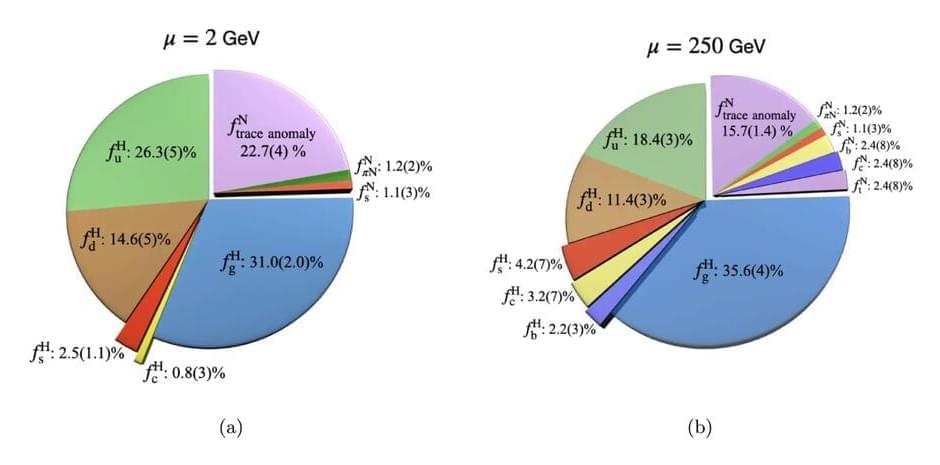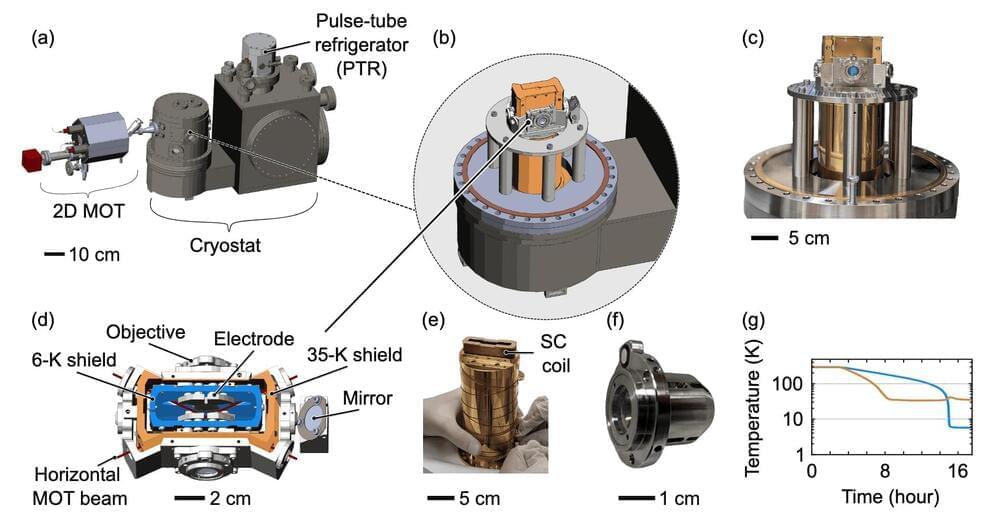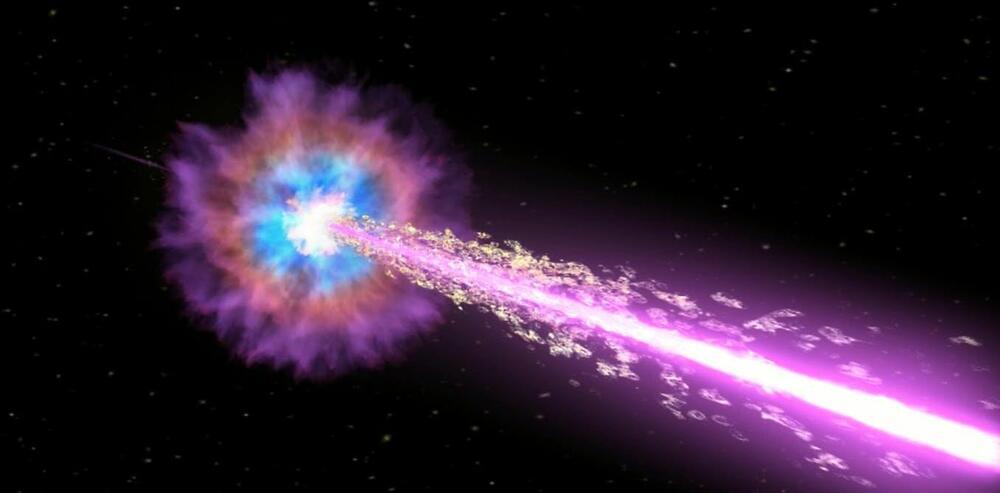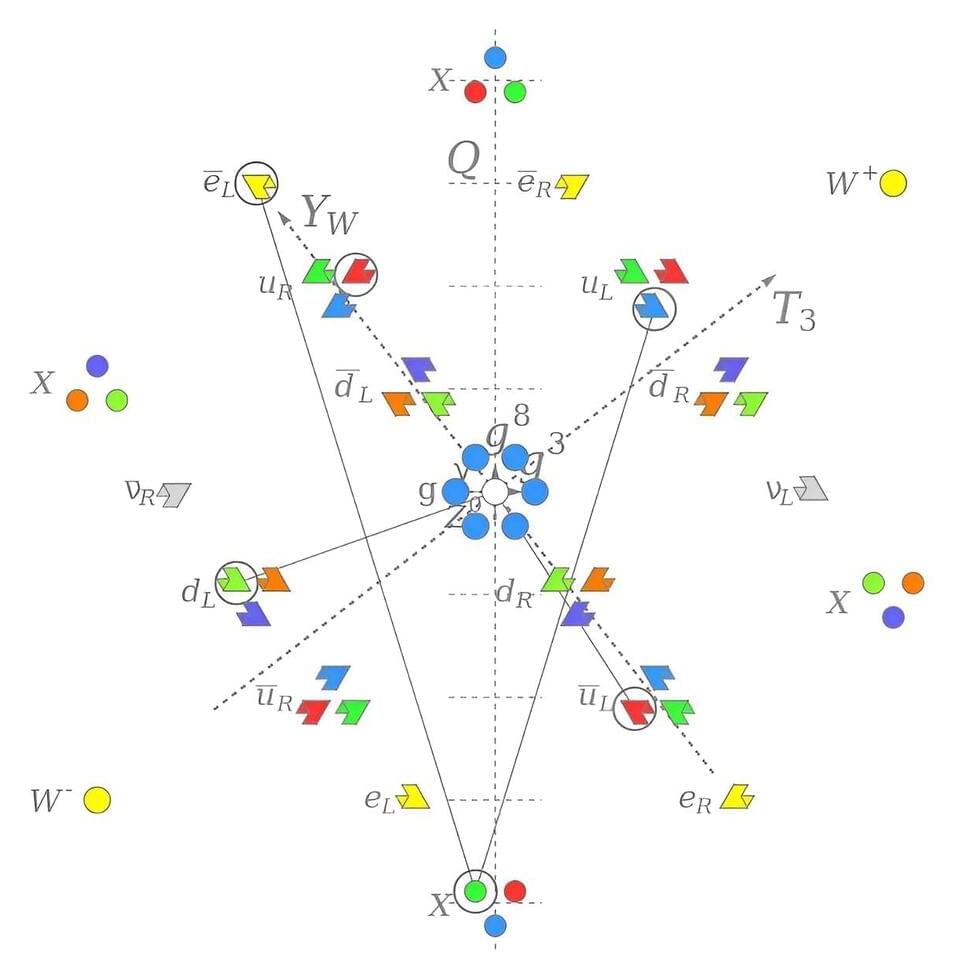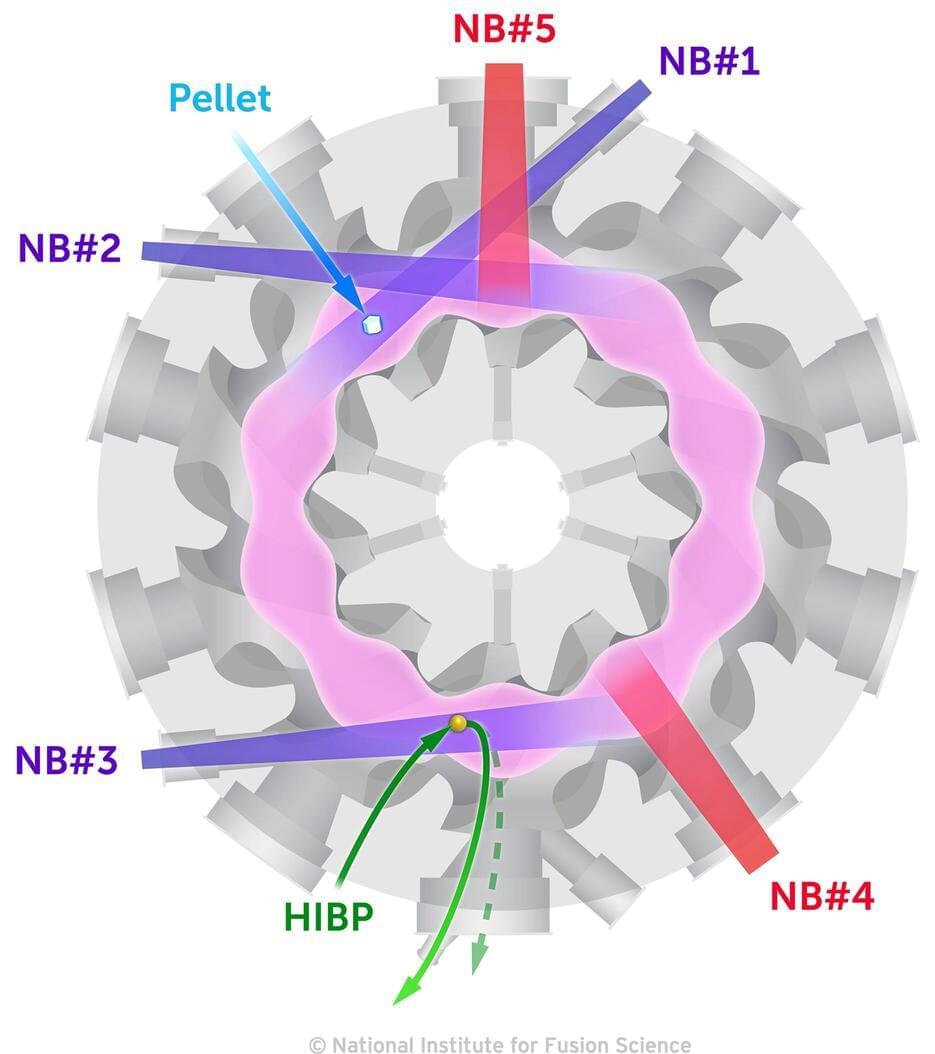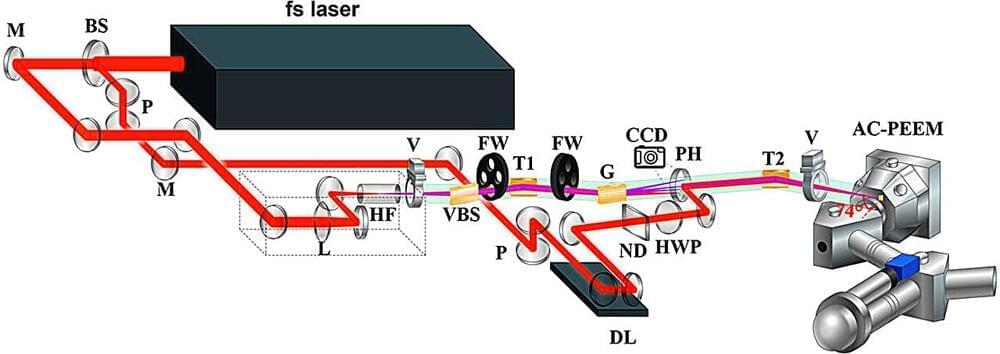Within the vast tapestry of the universe, where the microscopic building blocks of matter intertwine with the cosmic dance of galaxies, lies a story of profound discovery. Venture into a realm where the laws of physics as we know them are both challenged and confirmed, where the invisible forces that hold the very fabric of our reality together are brought into the light. This narrative isn’t born from the pages of a science fiction novel but emerges from the cutting-edge explorations at the heart of quantum physics. At this frontier, scientists embark on a rigorous inquiry to understand the origins of particle mass, revealing insights that connect the infinitesimal to the immense, from the atoms in our bodies to the distant stars.
Category: particle physics – Page 123
Article 39 Why an electron does not fall into the nucleus in terms of the strong and weak nuclear forces.
Your thoughts would be appreciated.
It can be shown one may able to derive the strong and weak nuclear forces and the internal geometry of protons and neutrons in terms of the orientation of…
Electrons in the atom do enter the nucleus. In fact, electrons in the s states tend to peak at the nucleus. Electrons are not little balls that can fall into the nucleus under electrostatic attraction. Rather, electrons are quantized wavefunctions that spread out in space and can sometimes act like particles in limited ways. An electron in an atom spreads out according to its energy. The states with more energy are more spread out. All electron states overlap with the nucleus, so the concept of an electron “falling into” or “entering” the nucleus does not really make sense. Electrons are always partially in the nucleus.
If the question was supposed to ask, “Why don’t electrons in the atom get localized in the nucleus?” then the answer is still “they do”. Electrons can get localized in the nucleus, but it takes an interaction to make it happen. The process is known as “electron capture” and it is an important mode of radioactive decay. In electron capture, an atomic electron is absorbed by a proton in the nucleus, turning the proton into a neutron. The electron starts as a regular atomic electron, with its wavefunction spreading through the atom and overlapping with the nucleus. In time, the electron reacts with the proton via its overlapping portion, collapses to a point in the nucleus, and disappears as it becomes part of the new neutron. Because the atom now has one less proton, electron capture is a type of radioactive decay that turns one element into another element.
If the question was supposed to ask, “Why is it rare for electrons to get localized in the nucleus?” then the answer is: it takes an interaction in the nucleus to completely localize an electron there, and there is often nothing for the electron to interact with. An electron will only react with a proton in the nucleus via electron capture if there are too many protons in the nucleus. When there are too many protons, some of the outer protons are loosely bound and more free to react with the electron. But most atoms do not have too many protons, so there is nothing for the electron to interact with. As a result, each electron in a stable atom remains in its spread-out wavefunction shape. Each electron continues to flow in, out, and around the nucleus without finding anything in the nucleus to interact with that would collapse it down inside the nucleus.
Pasqal reported the successful loading of over 1,000 atoms in a single shot within their quantum computing setup.
The result is a significant advancement in the field, showcasing the practical applicability of quantum computing in solving complex material science problems. Furthermore, the researchers discovered factors that can improve the durability and energy efficiency of quantum memory devices. The findings have been published in Nature Communications.
In the early 1980s, Richard Feynman asked whether it was possible to model nature accurately using a classical computer. His answer was: no. The world consists of fundamental particles, described by the principles of quantum physics. The exponential growth of the variables that must be included in the calculations pushes even the most powerful supercomputers to their limits. Instead, Feynman suggested using a computer that was itself made up of quantum particles. With his vision, Feynman is considered by many to be the Father of Quantum Computing.
Scientists at Forschungszentrum Jülich, together with colleagues from Slovenian institutions, have now shown that this vision can actually be put into practice. The application they are looking at is a so-called many-body system. Such systems describe the behavior of a large number of particles that interact with each other.
After its “birth” in the Big Bang, the universe consisted mainly of hydrogen and a few helium atoms. These are the lightest elements in the periodic table. More-or-less all elements heavier than helium were produced in the 13.8 billion years between the Big Bang and the present day.
Stars have produced many of these heavier elements through the process of nuclear fusion. However, this only makes elements as heavy as iron. The creation of any heavier elements would consume energy instead of releasing it.
In order to explain the presence of these heavier elements today, it’s necessary to find phenomena that can produce them. One type of event that fits the bill is a gamma-ray burst (GRB)—the most powerful class of explosion in the universe. These can erupt with a quintillion (10 followed by 18 zeros) times the luminosity of our sun, and are thought to be caused by several types of event.
Several thousand sensors distributed over a square kilometer near the South Pole are tasked with answering one of the large outstanding questions in physics: does quantum gravity exist?
The sensors monitor neutrinos —particles with no electrical charge and almost without mass—arriving at the Earth from outer space. A team from the Niels Bohr Institute (NBI) at the University of Copenhagen have contributed to developing the method which exploits neutrino data to reveal if quantum gravity exists.
“If as we believe, quantum gravity does indeed exist, this will contribute to unite the current two worlds in physics. Today, classical physics describes the phenomena in our normal surroundings such as gravity, while the atomic world can only be described using quantum mechanics. The unification of quantum theory and gravitation remains one of the most outstanding challenges in fundamental physics. It would be very satisfying if we could contribute to that end,” says Tom Stuttard, assistant professor at NBI.
Leonardo DiCaprio’s dream.
Stars at the Milky Way’s center stay young forever, scientists claim, by feeding off dark matter particles that are abundant there.
Does proton decay exist and how do we search for it? This is what a recently submitted study to the arXiv preprint server hopes to address as a team of international researchers investigate a concept of using samples from the moon to search for evidence of proton decay, which remains a hypothetical type of particle decay that has yet to be observed and continues to elude particle physicists.
In the realm of fusion research, the control of plasma density, temperature, and heating is crucial for enhancing reactor performance. Effective confinement of plasma particles and heat, especially maintaining high density and temperature at the core where fusion occurs, is essential.
A study has unlocked new dimensions in understanding the ultrafast processes of charge and energy transfer at the microscale. The research delves into the dynamics of microscopic particles, providing insights that could revolutionize semiconductor and electronic device development.
